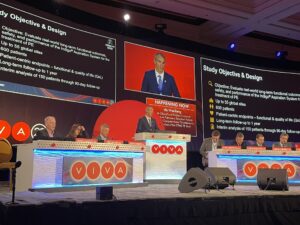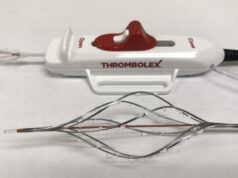
Patients undergoing computer-assisted vacuum thrombectomy with the Indigo Aspiration System (Penumbra) for pulmonary embolism (PE) showed 2.7% rates of both major adverse events (MAEs) and major bleeding at 48 hours post-procedure alongside “a significant reduction” in right ventricle/left ventricle (RV/LV) ratio of 25.7%, according to an interim analysis of the STRIKE-PE study.
“The STRIKE-PE dataset is very encouraging as it confirms the promise of computer-assisted vacuum thrombectomy to restore blood flow quickly, safely and effectively while also showing promising, prompt and lasting improvement in patient outcomes,” said Ido Weinberg, MD, a vascular medicine specialist at Massachusetts General Hospital in Worcester, Massachusetts, who presented the data during a late-breaking science session at the Vascular Interventional Advances (VIVA) 2023 annual meeting (Oct. 30–Nov. 2) held in Las Vegas.
The interim analysis—comprising 150 patients of a real-world, multicenter study at up to 55 global centers aimed at eva
luating 600 subjects with acute PE symptoms of ≤14 days and a RV/LV ratio ≥0.9—demonstrated that mean RV/LV ratio significantly decreased from 1.39 at baseline to 1.01 at 48 hours post-thrombectomy. Four patients experienced MAEs within 48 hours. From baseline to 48 hours, the median clinical measures of heart rate and respiratory rate significantly decreased, Weinberg informed VIVA 2023.
In terms of secondary outcomes out to 90 days, Weinberg said the dyspnea scale significantly improved from presentation to discharge and from presentation to the three-month follow-up marker. Additionally, the six-minute walk test distance significantly improved from discharge to 90-day follow-up.
“STRIKE-PE interim results demonstrated a rapid, statistically significant improvement in RV/LV ratio and clinical measures while maintaining safety,” Weinberg concluded. “At 90-day follow-up, treatment with computer-assisted vacuum thrombectomy with the Indigo Aspiration System improved patients’ functional capacity.”
STRIKE-PE will follow patient outcomes out to one year.













